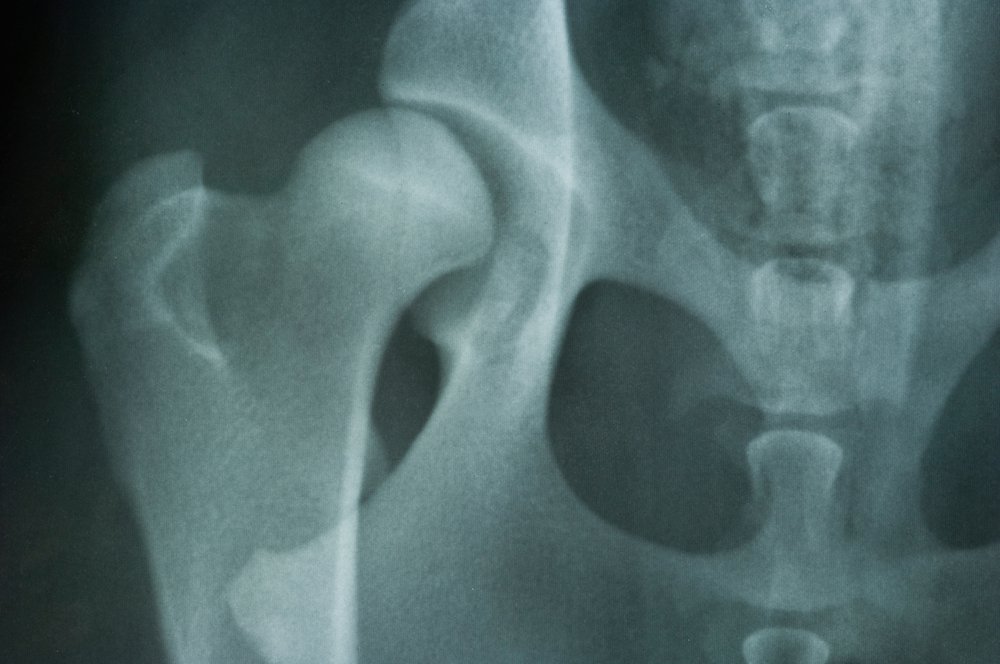Canine hip dysplasia is a disease of the hip that commonly causes limping in dogs. In animals with hip dysplasia, the ball and socket joint is abnormally structured and can’t meet as they should. This means that when the dog moves, the hip socket grinds and rubs rather than sliding. Hip dysplasia is also associated with a laxity in the connective tissue, ligaments and muscles, so the joint is also poorly supported. Eventually, hip dysplasia in dogs typically results in loss of the hip joint’s function.
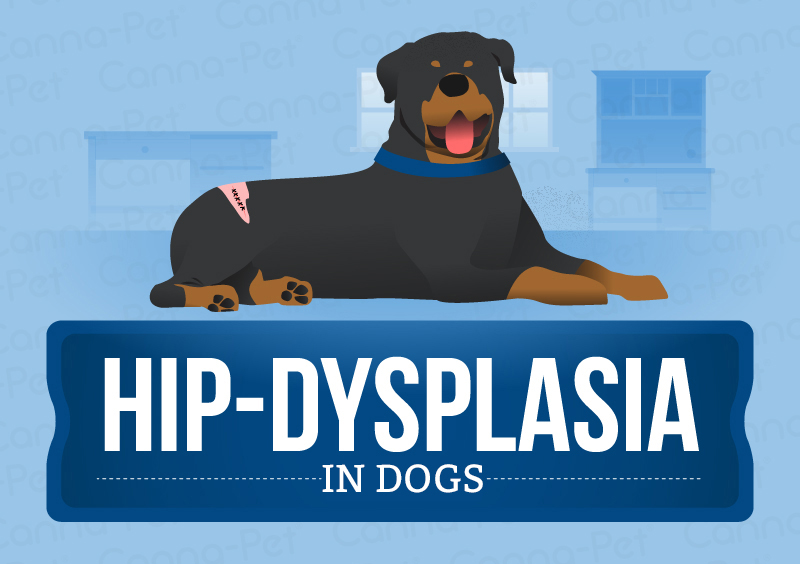
Hip dysplasia, among the most common canine skeletal conditions, strikes larger dogs most often. Certain breeds are more likely to develop hip dysplasia, but gender is not a factor in the disease. Onset of canine hip dysplasia symptoms may be early, occurring when the dog is only about four months old; this early onset type of dysplasia is related to laxity or looseness in joints. Late onset hip dysplasia is frequently associated with osteoarthritis, an inflammation disease which causes joint cartilage to degenerate over time.
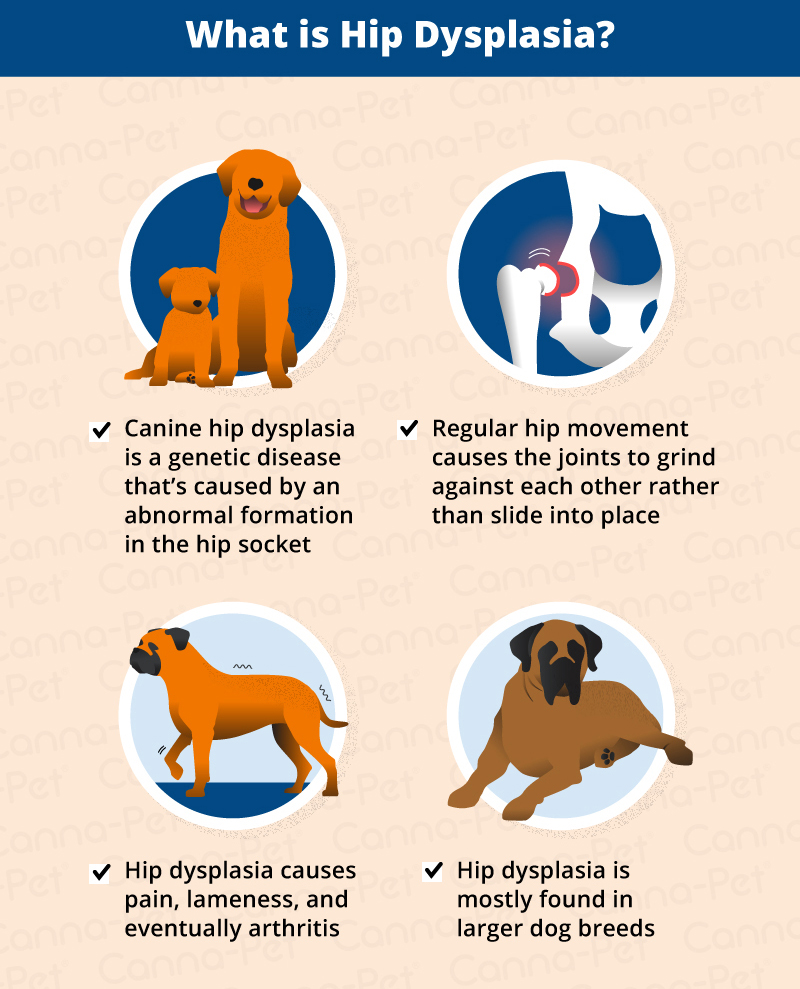
Symptoms of Hip Dysplasia in Dogs:
Below is a list of hip dysplasia symptoms in dogs:
- A decrease in activity
- A stance with the back legs unusually close together, narrow
- Decreased range of motion specifically in the hips
- Hind-limb lameness, either intermittent or constant, which is often more pronounced after periods of activity or exercise
- Increase in shoulder muscle mass from the increased burden of avoiding weight in the area of the hips
- Joint movement causes grating
- Laxity or looseness if the hip joint (this is characteristic of the early onset form of the disease, and it isn’t always seen in long-term or late onset cases)
- Loss of thigh muscle mass
- Noticeable sore hip joints and pain
- Reluctance to climb stairs, jump and/or run
- Swaying gait or “bunny-hopping”
- Trouble getting up
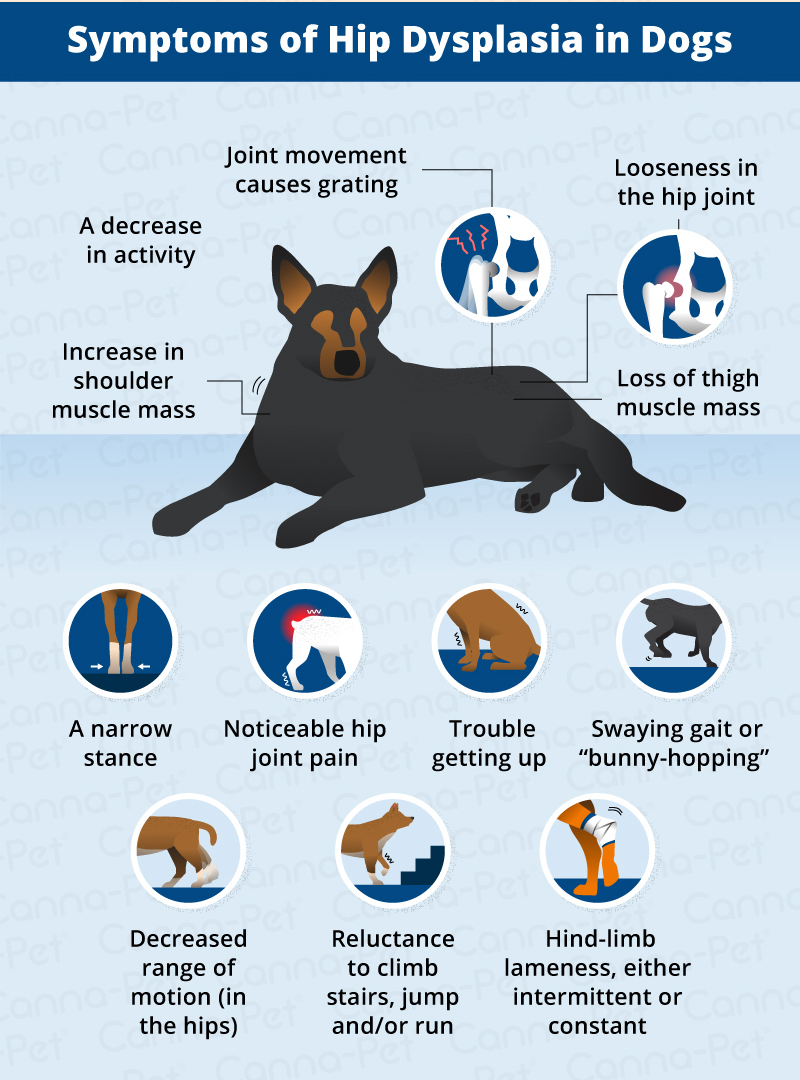
Causes
Before you seek out treatment for hip dysplasia in dogs, see if you can identify possible causes. The development of canine hip dysplasia is controlled by a complex interaction of environmental factors and genetic predisposition.
- Genetic predisposition for hip laxity and/or looseness
- Amount of pelvic-muscle mass
- Nutritional factors
- Obesity and rapid weight gain
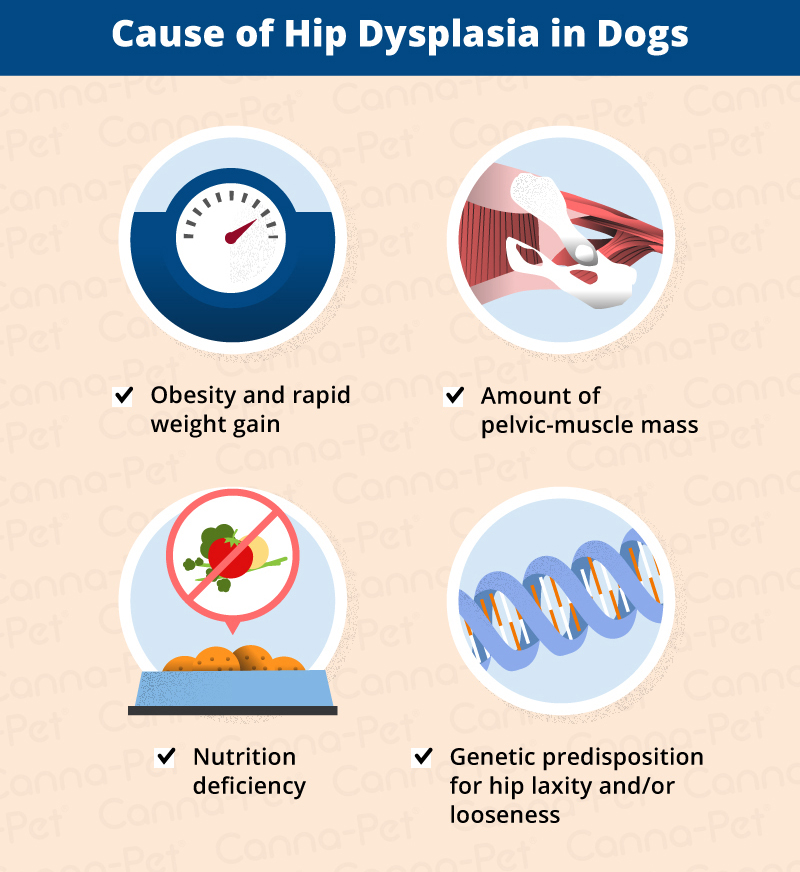
Diagnosis
Only a veterinarian can say for sure whether your dog is suffering from hip dysplasia. He or she will perform a complete physical exam on your dog, including urinalysis, electrolyte panel, complete blood count and a blood chemical profile. The veterinarian will also take your dog’s full medical history including onset and type of symptoms, your dog’s parentage history of developmental dysplasia and any possible injuries or activities that may have influenced symptoms in your dog.
X-rays are key to seeing the presence of developmental hip dysplasia as well as its severity. An x-ray can help your veterinarian visualize bilateral stifle disease, various bone disorders, degenerative diseases of the spinal cord, and lumbar vertebral instability.

Treatment for Hip Dysplasia in Dogs
Canine hip dysplasia treatment typically involves a multi-pronged approach to the problem. Surgery like a femoral head ostectomy or a total hip replacement is a necessity for dogs with severe hip dysplasia, but many dogs can be helped without such a drastic intervention. Many factors go into how necessary a hip dysplasia surgery is: age, cost, degree of osteoarthritis, intended function (for example as a service dog), severity of joint looseness, size, and your veterinarian’s recommendations all factor into this kind of decision.
The triple pelvic osteotomy (TPO) surgery is especially useful in dogs younger than one year; in this surgery the socket itself is rotated. For dogs younger than six months old, the juvenile pubic symphysiodesis surgery can help; in this procedure a portion of the pelvis is fused together to increase the stability of the hip joint.
For older dogs, a total hip replacement may be the only answer. This is often the case in dogs experiencing severe osteoarthritis when physical therapy and drug treatment fail. A cheaper alternative for muscular dogs and those weighing less than 44 pounds is excision arthroplasty in which the ball portion of the hip joint is removed; this allows muscles alone to take up the movement in the joint.
Your veterinarian may recommend drug treatment. The usual plan is to treat with anti-inflammatory drugs and pain medications.
There is also more than one natural treatment for hip dysplasia in dogs. Physiotherapy such as swimming which carefully moves and exercises the joint passively can help maintain the integrity of the muscle and decrease stiffness in the ball-and-socket joint. Weight control is critical to ensuring your dog’s joints are not overburdened with excess weight.
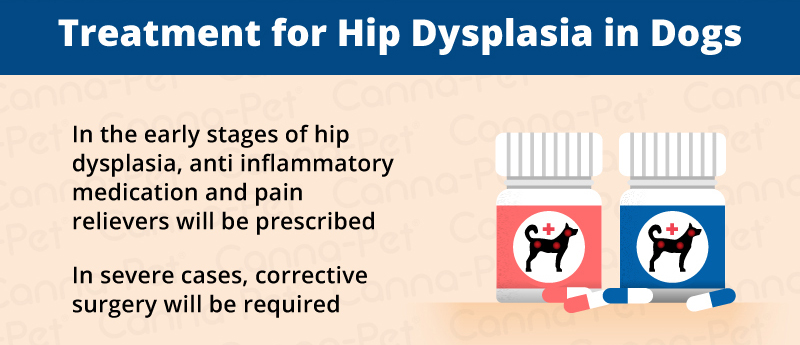
Living and Management
You should follow up with your veterinarian regularly to ensure that you notice any changes in the dysplasia. Your veterinarian will usually x-ray the joint so he or she can compare the visuals over time. This allows them to see how the disease is progressing, or in some cases, how successful the surgical treatment was. Remember, pets with serious hip dysplasia should not be bred. A holistic approach to treatment for hip dysplasia in dogs should also include a diet of nutritionally rich, high-quality foods and gentle exercise when appropriate.
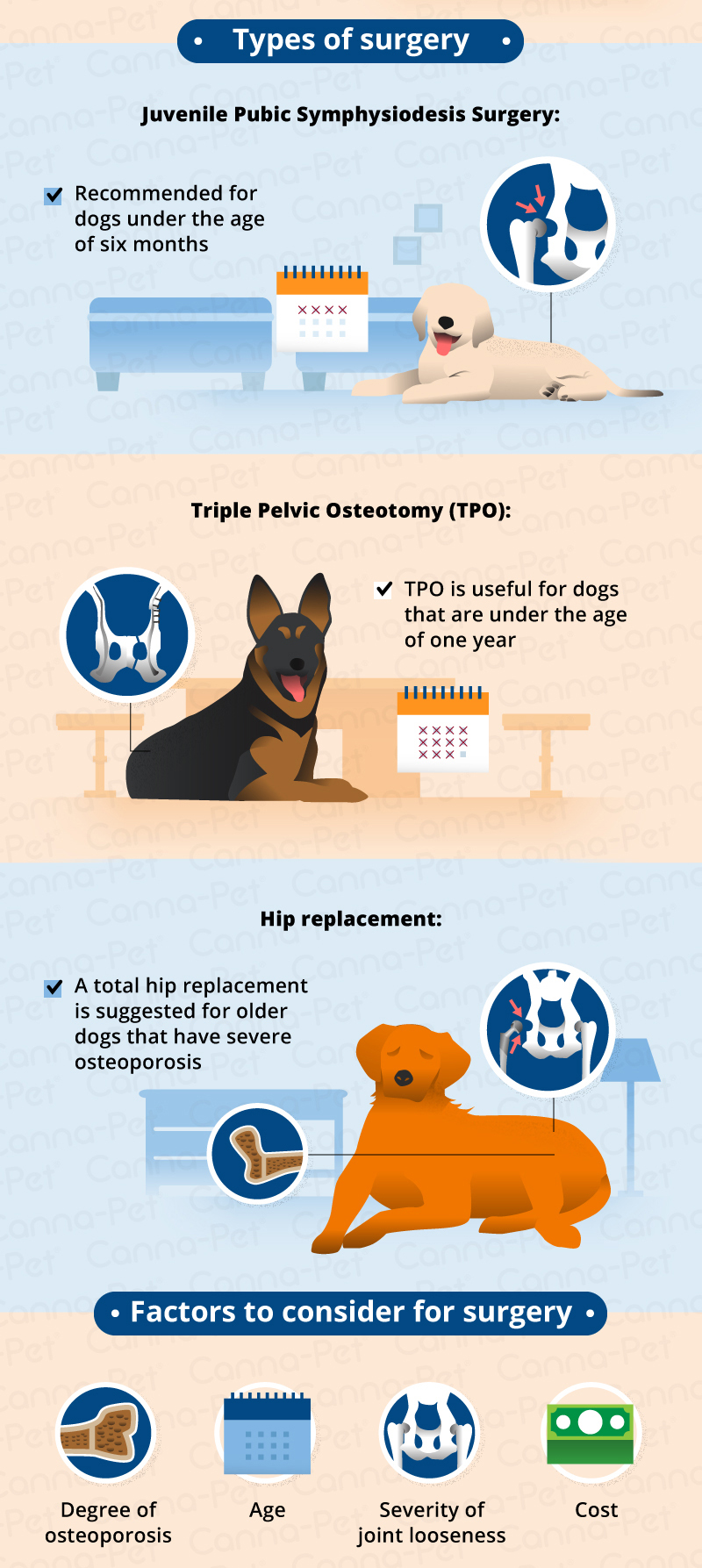
Breeds Prone to Hip Dysplasia
This condition is normally associated with larger breeds such as Bulldogs, Mastiffs, American Staffordshire terriers, Rottweilers, Newfoundlands, Saint Bernards, Old English Sheepdogs, German Shepherds, Golden Retrievers, Alaskan Malamutes, Labrador Retrievers, and Samoyeds. However, dogs of all breeds and all sizes are susceptible to this inherited condition, including some small breeds, such as Pugs, Miniature Cockapoos, and French bulldogs.
See our Breed Guide for more specifics on your pet.

Source: PetMD

